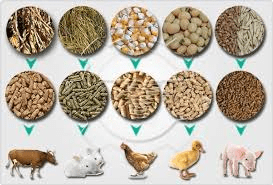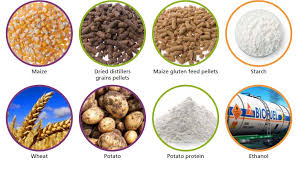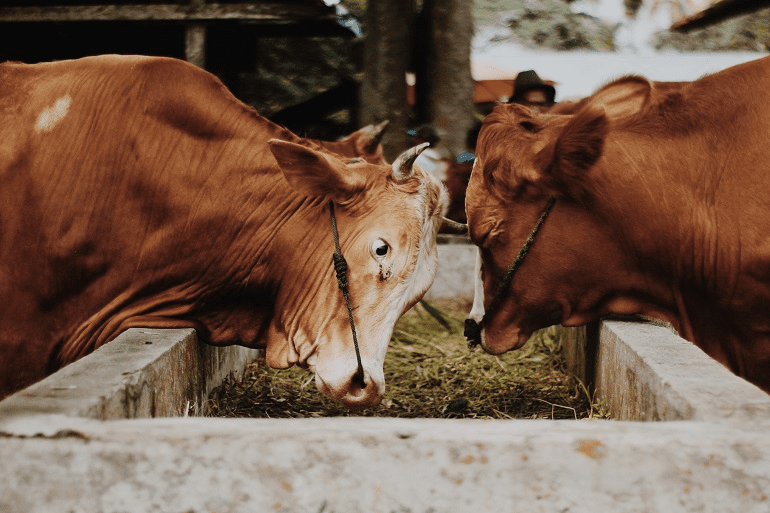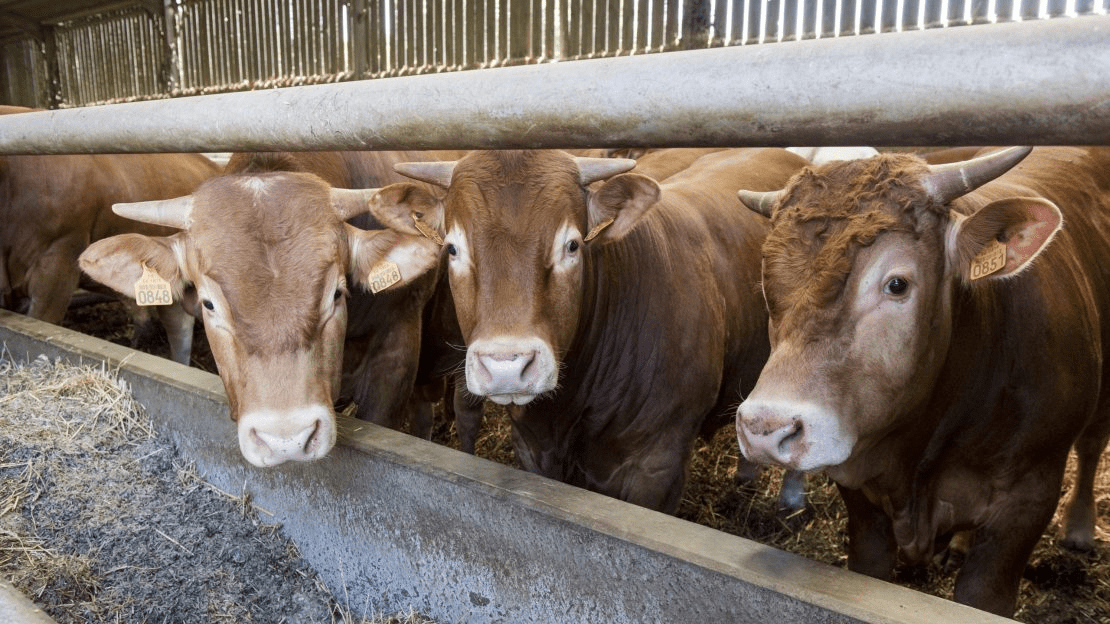Animal feedstuff availability is an important factor in animal husbandry, productivity of the livestock industry depends on this factor to a very large extent. Feed availability has some militating factors which is the main focus of this literature.
Availability of animal feedstuff can be hampered by climatic changes, economic problems, mycotoxins occurrence in feedstuff, insects, microorganisms, deteriorative changes and losses in storage.
For effective feed production, these challenges have to be taken into consideration in order to help proffer solution for sustainable growth and improvement of the livestock feed industry.
1. Climate Change Effect on Animal Feedstuff Availability

The climate change is expected to heighten the vulnerability to livestock feed in terms of quality and quantity. The hot and dry seasons has been induced the greatest reduction in biomass yield for different types of grass-growing in low land environments.
The research facts made by had indicated that increases in temperature, carbon dioxide le vels and nitrogen deposition decrease the primary production in pastures. Conversely, many already semi-arid areas are predicted to experience lower rainfall as a consequen ce of climate change.
The length of the pasture growing period is expected to decrease in many parts of the tropics and this may be accompanied by greater variability in rain fall patterns with more frequent droughts.
The study made by Tubiello et al. on evalua tion of climate change impact on quality of forage species revealed that high temperatures tend to increase lignifications in plant tissues and hence decrease the digestibility of forage and concurrently it was induced a shift from C3 grass species toC4 grasses which has direct implications for forage supply.
Rangeland is important assets for past oral communities and the study made on range land productivity to recognize the effect of climate change had demonstrated that climate change based effects have been de pressing range pasture productivity and encouraged botanical change in vegetation composition.
The changes in seasonal patterns of forage availability could pose addition al challenges for grazing management in the rangeland. Similarly, the climates become hotter and drier; pasture composition is likely to shift to species that may be less suit able for grazing.
Climate change has observed to affect rangeland species richness and biodiversity. Evidently, the studies made in the Qinghai-Tibet Plateau area had show n that a trend of warming and drying is driving a transition of highly productive alpine adapted Kobresiacommunities to less productive steppe Stipacommunities.
Moreover, Nardone et al. also reported that environmental warming and drying trend are negatively affected the rangeland productivity by lowering the quantity and nutritional quality of forages besides causing water scarcity.
Pertaining to the range forage species composition, as temperature and CO2 levels change, optimal growth and dynamic of ranges species also change.
2. Economic Problems

There are several factors that affect the economic viability of the animal feed industry: volatility in the price of raw materials and exchange rates; the effect of the biofuel industry o n the market of feedstuffs; the changes driven by a consolidation of the global meat industry; and also political regulations on specific issues like the policy on genetically – modified organisms (GMO’s) that affect the competitiveness of the industry in different parts of the global market.
The emergence of the biofuel industry has strengthened the relationship between agricultural prices and crude oil prices resulting in a more volatile financial scenario. Moreover, biofuel production requires an important supply of raw materials that affect market availability and pricing. On the other hand, this increased production of biofuels from crops generates co-products which are of economical interest to the feed industry.
The increasing availability of rapeseed meal, glycerol and dry distiller grains (DDGS) results in changes on the animal feed composition and quality of the feeds. The feed industry will undergo continued consolidation as the customer base consolidates and changes.
Global meat industry is already consolidating especially in t he US, Brazil and the EU to a less extent. The GMO policy and in particular the asynchronous authorizations of new GMO varieties has a very significant effect on the relative cost of feed and profitability of meat production in different parts of the world, wit h a negative impact on the EU production.
All these factors will play a key role in deci ding where the animals will be produced and thus feed manufactured in the future to meet the growing and consolidated demand for meat, milk and eggs.
This production needs to be developed in a sustainable manner from and environmental and social stan d points. Issues like a responsible soya production, control of greenhouse gas emission s and efficient use of byproducts are key challenges in coming years.
The industry has created an international forum to address negative environmental and social impacts of the soy production and its expansion in South America.
Regarding greenhouse emiss ions, the compound feed industry is one of the stakeholders having a role in minimizin g the environmental impact through the control of emissions by the feed industrial pro cess as well as the control of emissions by the animal.
The reductions of emission from the feed plant are related to an efficient use of energy, but they are far less important than the potential reduction of emissions by the animal which can be influenced thro ugh feed composition.
Different nutritional strategies are available to reduce the emiss ion of nitrogen and phosphorus in the manure, as well as to reduce the emission in the air and odor problems.
Finally, an efficient use of byproducts in the feed industry is al so a top priority from the standpoint of social and environmental responsibility, as wel l as for their economic impact for the society.
3. Loss Occurring During Storage
Losses occurring in feedstuffs during storage fall under four major categories:
- Weight loss,
- Quality loss,
- Health risk, and
- Economic loss.
These losses arise from the foraging activities of insects, micro-organisms and animals; improper handling; and, physical and chemical changes, all of which are interrelated.
Storage loss in a feed mill is primarily due to material eaten or destroyed by insect and animal pests and fungi. When serious infestation by these pests occurs there is extensive weight loss accompanied by damage to quality.
Intense insect activity often results in mould growth which not only completes the destruction of the feedstuffs but also poses serious health risks to animals or fish feeding on rations containing damaged feed ingredients.
The first three categories of storage loss are of primary concern to the compound feed manufacturer. Weight loss due to loss of moisture content or to the presence of a large insect population in stored feed is problematic in developing countries where post-harvest handling and processing are often improperly conducted.
Ineffective enforcement of quality standards (if, in fact, such standards exist) results in the production and supply of inadequately processed feed ingredients which often are more susceptible to det eriorative processes.
The lack of quality standards reflects the relative unimportance at tached to aesthetic considerations in commercial transactions of feed commodities in t hese countries.
Hence, economic loss which we shall define here as the cost incurred in inspection, prevention, and control to maintain quality standards (although considere d to be of overriding importance in most industrialized countries) is superseded by the other three major categories of storage losses in developing countries.
This article looks at the effects of insects and micro-organisms and the deteriorative changes that result from their presence in stored ingredients in feed mills in the tropics.
Read Also: Methods Used in Animal Feed Formulation for Various Classes of Farm Animals
4. Insects
Insects feed on most feed ingredients and contaminate them with faeces, webbing, bod y parts, foul odours, and micro-organisms. Beetles and moths are the most destructive of the grain insects, and many are capable of destroying an entire store of feed.
Factors Affecting Insect Infestation of Animal Feedstuffs

The occurrence and development of an insect infestation is dependent on many factors such as source of insects, available food, temperature, moisture, air, condition of the feed-stuff, presence of other organisms, and the efforts to exclude or kill the pests.
Maj or factors affecting population growth of most insect species are: temperature, relative humidity, and moisture content of the feed ingredient. The nutritive content and certain physical properties of feeds will also determine the vulnerability of such materials to attack.
Only a few insect species are able to attack sound kernels of feed grains. High moisture content about 16 percent or more renders feed grains soft and susceptible to attack. Meals pressed into cakes or hard flakes are more resistant. Insects appear to eat small particles more readily than large ones.
1. Temperature
All insects attacking stored feedstuffs have an optimum zone of temperature at which populations increase most rapidly. Most of the important insect pests are tropical species with an optimum temperature of about 28°C. It is, therefore, evident that losses from insect infestation will be greatest in the tropics.
2. Relative humidity
As a rule, relative humidity affects the rate of population increase in insects less dramatically. Up to 70 percent relative humidity, there is progressive increase in insect multiplication. Beyond 70 percent relative humidity, mould formation sets in and complicates the situation.
The moisture content of feedstuff is closely related to the relative hu midity. A low moisture content coupled with low humidity will provide protection aga inst insect infestation.
3. Feeding Habits of Insects
Some insects are not discriminatory in their feeding habits whereas others are highly s elective in their choice of the parts of a feed ingredient eaten. For example, moth larva e generally feed on or near the surface of the grain mass; beetles are destructive throughout.
Most larvae spread silk webbing over the surface of feed grains and their by-products, making them not only unsightly but also creating handling and processing problems as well.
Insect infestations sometimes cause excessive heating of grain. When the insect population reaches a certain density, their metabolic activities release more heat than can be dissipated. In localized areas where the insect population is extremely dense the temperature may reach 45°C.
Associated micro-organisms, mainly fungi, may raise this to nearly 75 °C, causing extensive spoilage and, occasionally, spontaneous combustion.
Nature of Losses Due to Insect Attack
The best warning of serious weight loss is the presence of a large insect population. This is easily identifiable in sacked grain by the appearance on the sack surface of frass resulting from feeding activity of the insects.
High temperature, high humidity, softness, and high nutritive value of the feedstuff and storage in small quantities are all conducive to insect damage, but are often unavoidable. Loss may be aggravated by prolong ed storage. Failure to keep the storage area clean and retention of infested sweepings will increase the liability of insect attack.
1. Weight loss
Weight loss in infested feed is not always evident unless it involves sacked grain or oil cakes when the appearance of grass on the surface of the sack points to the feeding act ivity of a large insect population.
2. Quality loss
For the feed manufacturer, one of the most important considerations of insect attack on feedstuffs is the loss of quality. The effects on quality are various. Most stored feed material undergo some chemical changes that alter their flavour and nutritive value.
As well as eating some of the feed, insect pests tend to accelerate these harmful chemical changes. Secretion of enzyme lipase by the insects themselves will enhance deteriorative chemical processes. Few stored feedstuffs are homogeneous and insects and mites are known to select those parts or particles of feed they prefer.
Many feedstuffs contain a high percentage of fat which tends to break down during storage. This breakdown is accelerated by insect attack, especially when the insects break off small particles, introduce micro-organisms, or raise the temperature or moisture content. Evidently, the insects use the fat in the material they eat. The breakdown of fat causes an increase in free fatty acids which cause off-flavours.
The free fatty acid involved in product rancidity is assumed to be oleic acid, and the quantity released in a result of oxidation of fats in certain feedstuff is quite substantial. Scavenging insects, such as cockroaches, may cause contamination with pathogenic bacteria such as Salmonella.
Read Also: Deteriorative Changes in Stored Feedstuffs
Control Measures
Climate is the most important factor determining the effectiveness of a storage system for feed ingredients because of the close relationship between insect growth and ambient climatic conditions.
An important relationship also exists between insects and micro-organisms in stored feedstuffs. Total eradication of insect populations from tropical warehouses for feed ingredients is not possible. The degree of infestation can, however be brought to manageable proportions through a programme of vigilance and effective control measures.
Heavily infe sted ingredients should not be brought into the store. Infested material, if accepted, should be kept separate until fumigated (this is to be done as soon as possible) to totally eradicate the pests.
Good house-keeping involving the sweeping up of spilled material will check scaveng er insects as well as rodents which may carry insects in their fur.
Common Adulterants of Animal Feeds and Fodder
Adulteration is defined as a mixture of a pure substance with some cheaper and low quality substance. It is done intentionally usually to make money.
In costly animal feed ingredients like oil seed cakes and feeds of animal origin like fish meal, adulteration is done by spraying urea in order to raise their protein content. However, sometimes brans, molasses are also added.
Besides urea, oilseed cakes are adulterated with husk, non-edible oilseed cakes. There adulteration and the following toxins are to be analyzed to avoid injuries to the animal health. Examples of toxins in various feeds include:
- Gossypol in cotton seed.
- Halmagglutinins in soybean and castor beans.
- Glucosinolates in rape seed.
- Tannins in sorghum, oil seed meal, mango seed kernel, mustard oil cake and Lucerne meal.
- Cyanogenic glycosides in linseed and cassava.
- Phytic acid in cereals, oilseed meal.
- Mycotoxins, primarily aflatoxins in maize, groundnut cake, etc.
Fish meal, meat meal and bone meal should be checked for pathogenic bacteria like salmonella.
Read Also: Other Methods/Technologies for Solid Waste Treatment






